One of the oddest underwater animals that I have seen off the coast of New Jersey is the northern moon snail, Lunatia heroes. I am amazed at how big the body of the animal is compared to the shell and I am equally amazed that it can fit its body back into the shell.
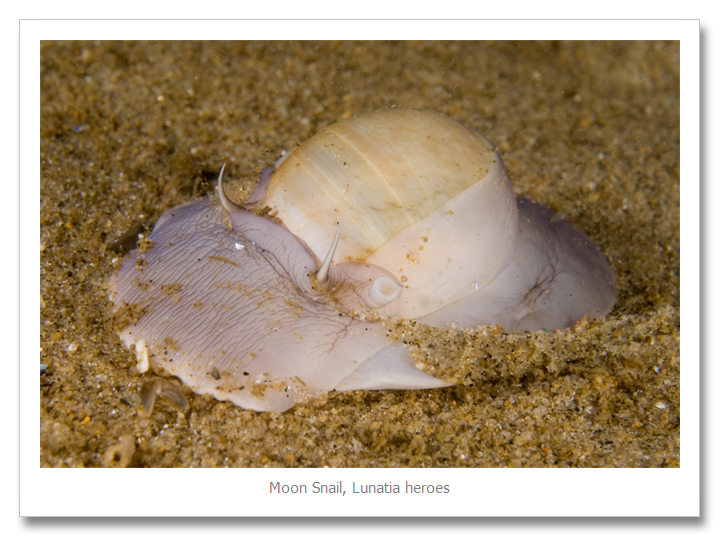
After some research, I found out that it is not as difficult for them as I imagined. When the moon snail comes out of its shell, it takes water into its body – expanding it. That’s how it becomes larger than the shell. When it retracts into the shell, it releases water from sinuses in its mantle and foot.
Like many aquatic animals, moon snails breathe. When I first saw this, I was skeptical but it makes sense. Animals need energy to live and they get it from oxygen and glucose. The glucose and breathable oxygen are broken down to carbon dioxide and water and energy is released. The northern moon snail has three methods of breathing. First is through a set of comb-like gills in their mantle and these gills work whether the moon snail is moving or stopped. The second method is another set of gills in a notch between the snail’s foot and shell. Finally, their skin is semi-permeable, allowing them to get oxygen through their skin. Because of this last ability, the moon snail can live out of the water for up to a week.
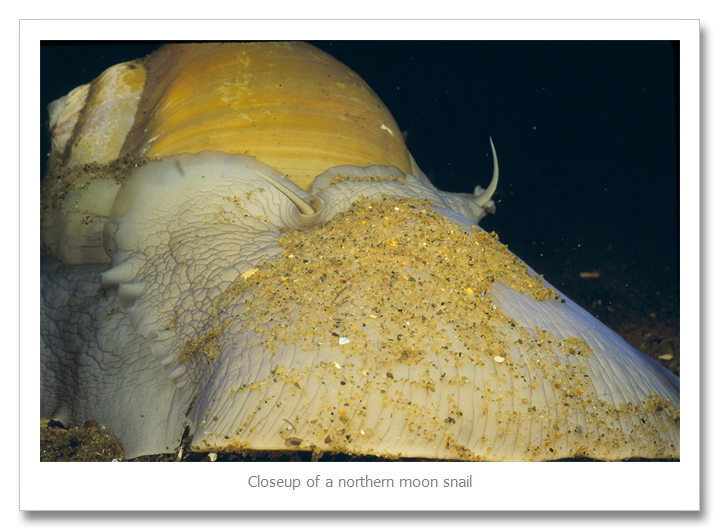
Moon snails eat bivalves like clams. It burrows into the sand to find them and once it does, it drills a tiny hole in the bivalve’s shell and releases digestive enzymes into the prey and sucks out the partially digested contents. Finding an empty shell with a countersunk hole drilled in it is a good indication that its former inhabitant was a dinner guest of the northern moon snail.
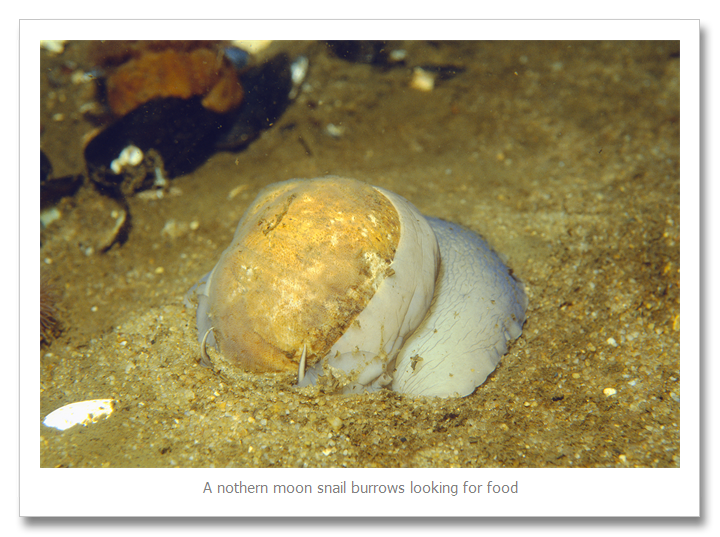
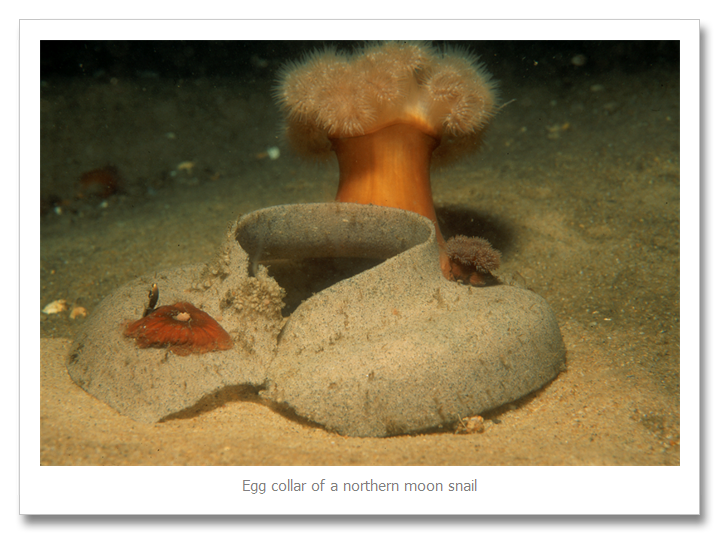
The round collar above is very distinctive and many northeastern divers may not know that it is the egg collar of the northern moon snail. The snail uses a combination of sand, mucous and eggs to make the collar. The collar has thousands of eggs embedded in it. The eggs hatch into a free-swimming larvae in the middle of the summer.
The male moon snail is smaller than the female and the females can live up to fourteen years. Empty northern moon snail shells make great homes for larger hermit crabs.
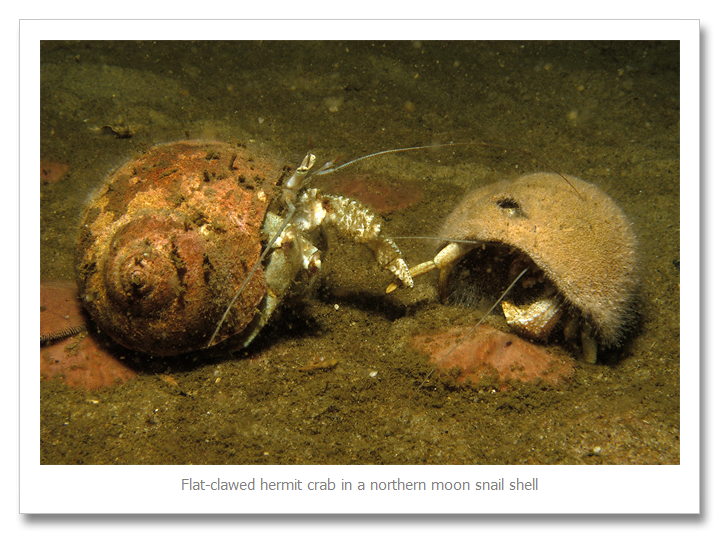
Thanks to my great friend, Andy Martinez, who is an amazing underwater photographer, I learned that the Latin name for the northern moon snail has been changed to Euspira heros. Now I only have to go through tons of image files and change that little tidbit.
Want to learn more about the underwater world off the state of New Jersey? Check out my book, Beneath The Garden State – Exploring Aquatic New Jersey.
© 2014, Herb Segars. All rights reserved.

